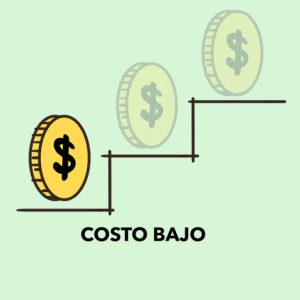The accessibility of semaglutide, a powerful diabetes treatment, hinges on its cost. Generics offer lower prices but vary in formulation, while dosage and administration frequency also impact costs. Patient demographics, insurance, and healthcare provider collaborations facilitate discounts, savings programs, and copayment assistance. Patients can leverage these initiatives to manage the cost of semaglutide through coupons, patient assistance programs, and pharmacy partnerships. Comparing savings options from insurance, manufacturers, and independent organizations is crucial for making informed decisions regarding affordability. These efforts have significantly reduced the cost of semaglutide, enhancing accessibility and treatment outcomes for those with metabolic conditions.
“The cost of semaglutide, a groundbreaking medication for diabetes management, can be a significant concern for patients. In this comprehensive guide, we explore various strategies and programs designed to help individuals reduce their out-of-pocket expenses. From manufacturer coupons to insurance benefits and exclusive savings plans, there are numerous ways to navigate the financial aspect of semaglutide therapy effectively. Understand the cost better, and gain access to affordable treatments with our detailed insights into available discounts and savings programs.”
Understanding the Cost of Semaglutide: A Comprehensive Overview

The cost of semaglutide can be a significant consideration for individuals looking to incorporate this innovative diabetes treatment into their management plan. Semaglutide, a glucagon-like peptide-1 (GLP-1) receptor agonist, has shown remarkable efficacy in reducing blood sugar levels and aiding weight loss. However, its high cost compared to traditional insulin or other medications can be off-putting for many patients. Understanding the factors that influence the price is essential for patients and healthcare providers alike.
Several elements contribute to the overall cost of semaglutide. Firstly, brand names and generics play a role; while generic versions are typically cheaper, brand-name drugs may offer specialized formulations or additional benefits, impacting the pricing. Secondly, dosage and administration frequency are critical; higher doses or multiple daily administrations can substantially increase costs over time. Additionally, patient demographics and insurance coverage influence affordability. Healthcare providers and pharmacies often work together to offer discounts, savings programs, or copayment assistance to make semaglutide more accessible, addressing potential financial barriers for patients requiring this life-changing treatment.
Exploring Discount Programs and Coupons for Semaglutide Users

Many patients and healthcare providers alike are constantly on the lookout for ways to manage the cost of semaglutide, given its significant role in diabetes management. One effective strategy involves exploring discount programs and coupons designed specifically for semaglutide users. These initiatives can substantially reduce out-of-pocket expenses, making this essential medication more accessible.
Discount programs often partner with pharmaceutical companies or healthcare providers to offer financial relief. Coupons, on the other hand, are direct savings opportunities that patients can redeem at pharmacies. By availing themselves of these resources, individuals can effectively navigate the challenges associated with the cost of semaglutide while ensuring they have access to the treatment they need.
Eligibility Criteria: Who Qualifies for Savings?

The eligibility criteria for savings programs related to semaglutide often vary between pharmaceutical companies and healthcare providers, but there are some common factors that determine who qualifies. Typically, these programs are designed to assist patients who may face financial challenges due to the high cost of semaglutide prescriptions. Eligibility is usually based on income levels, insurance coverage, or specific medical conditions. Patients with limited income or those without adequate health insurance coverage might be eligible for direct discounts or assistance programs that help offset the expense of this medication.
Some savings initiatives target individuals diagnosed with certain metabolic disorders or type 2 diabetes, as semaglutide is primarily prescribed for these conditions. Patients who meet specific criteria related to their health and treatment history can enroll in these programs. It’s advisable for those interested in accessing such savings to review the eligibility requirements thoroughly and reach out to their healthcare providers or insurance companies for guidance on navigating these initiatives.
How to Access and Redeem Savings on Semaglutide Prescriptions

Accessing savings on Semaglutide prescriptions is a straightforward process designed to make this important medication more affordable for all patients. The first step is to check with your pharmacist or healthcare provider to ensure your prescription insurance plan covers Semaglutide. Many insurance plans, including Medicare Part D and private insurers, do offer coverage for this drug.
Once confirmed, you can easily redeem savings by using a recognized coupon or patient assistance program (PAP). These programs are widely available from pharmaceutical companies and independent organizations. Simply present your prescription at the pharmacy along with your coupon or PAP card to receive the discounted price on each refill. Some programs may require registration, while others offer instant discounts at the point of purchase, making it convenient to save money on the cost of Semaglutide.
Comparing Different Savings Options: Insurance vs. Manufacturer Programs

When considering the cost of semaglutide, comparing different savings options is crucial. Insurance programs and manufacturer-sponsored savings initiatives both offer potential discounts on this important medication. Insurer-based plans often involve negotiating rates with pharmacies, while manufacturer programs may provide direct rebates or copay assistance. Evaluating each option requires understanding out-of-pocket expenses, eligibility criteria, and the overall impact on affordability.
Manufacturer programs can be particularly beneficial for those without comprehensive insurance coverage. These initiatives often target individuals who would struggle to afford semaglutide at full price, offering reduced copays or even free treatments. Insurance plans, on the other hand, may have varying levels of coverage and out-of-pocket costs, making it essential to review policy details closely. Understanding these distinctions helps patients make informed decisions to manage their healthcare expenses effectively.
Real-World Success Stories: Saving Money on Semaglutide Treatments

In the real world, many patients and healthcare providers have witnessed significant savings through discounts and savings programs for semaglutide treatments. These initiatives have made a substantial difference in managing the cost of semaglutide, a crucial medication for various metabolic conditions. By offering patient assistance programs, copayment reductions, and manufacturer coupons, pharmaceutical companies are enabling better access to this life-changing therapy.
Success stories abound, with patients sharing their experiences of saving hundreds, if not thousands, of dollars on their monthly prescriptions. These savings allow individuals to stick to their treatment plans consistently, thereby enhancing the overall effectiveness of semaglutide in managing conditions like type 2 diabetes and obesity. This accessibility is a game-changer, ensuring that more people can benefit from this innovative medication without the financial burden often associated with specialized treatments.
